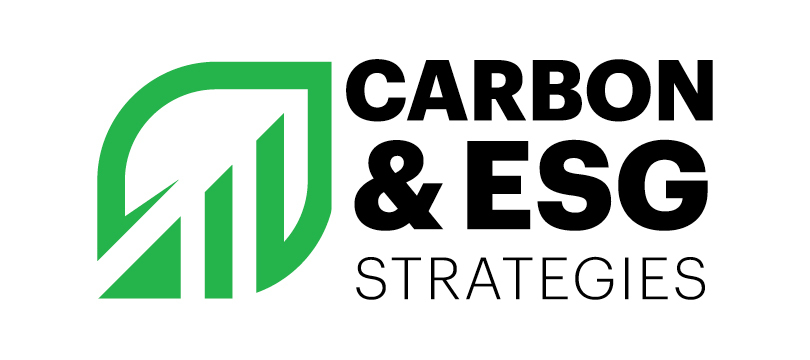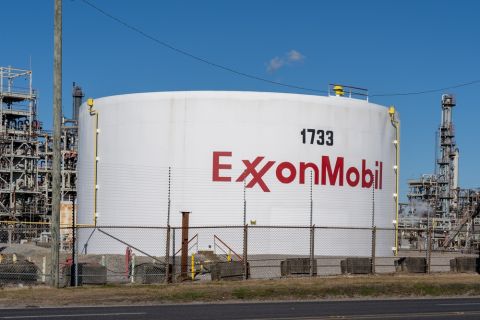
(Source: Shutterstock)

Carbon capture technologies in the U.S. date back to the 1970s when they were used to remove CO2 from gas streams, improving the value of natural gas and EOR in the Permian Basin.
Times are changing.
Though carbon capture is still commonly used to help boost oil production today, focus is shifting to storing captured carbon as the world aims to reduce lower greenhouse gas emissions.
“Instead of trying to meet a natural gas product spec, we’re identifying other CO2-rich sources and trying to remove the CO2 to make sure it never gets into the atmosphere,” Jeff Guenther, project development director of carbon capture and blue hydrogen for Honeywell, told Hart Energy. “The U.S. is a leader in this space,” giving ample storage capacity in deep geological formations with some CO2 pipeline infrastructure already in place in the U.S. Gulf Coast with more being developed in the Midwest.”
Hart Energy spoke with Guenther about carbon capture and storage (CCS) technologies, which the International Energy Agency said are required to reach net-zero emissions targets. He called the state of affairs for CCS in the U.S. “quite good,” with strong interest in developing carbon capture projects in other parts of the world, including Europe, as society and corporations get serious about reducing emissions.
Exxon Mobil selected Honeywell technology to capture CO2 from a new blue hydrogen plant at its Baytown, Texas, complex, with a capacity to store up 10 million metric tons of CO2 per year.
Data from the Global CCS Institute show the number of CCS projects grew 44% through September 2022 compared to a year earlier, with North America leading the world in CCS development. However, more large-scale deployment is needed to hit net-zero emissions goals.
This interview was edited for length and clarity.
Velda Addison (VA): Do you consider carbon capture underutilized globally? How do you see that changing, given the drive to lower emissions and net-zero initiatives?
Jeff Guenther (JG): The key with carbon capture and a lot of these projects is there does need to be some supportive policy for projects to go forward. With the passage of the Inflation Reduction Act, the U.S. has very clear policy in place that gives project developers in the U.S. confidence. Europe also has pretty clear policy. Outside of that, there are many more question marks. I would agree it’s an underutilized tool, and it’s because policy in other regions are sort of lagging behind Europe and the U.S. in terms of clarity and magnitude of how they would support a project. … It is moving, but just at a slightly slower pace because they're waiting clarity on the policy side. It is underutilized from that standpoint, but there seems to be global vision that it is a strong opportunity to reduce emissions, especially in sectors that have limited options to continue to operate while lowering their CO2 footprint.
VA: In the energy industry, we often hear that CCS is expensive. What makes it expensive?
JG: Expensive is a relative term here, right? Everything needs to be compared to the impact of climate change, which is expensive in its own right if we don’t do anything. So why is it expensive? There’s a lot of CO2 being emitted into the atmosphere. So, when you’re talking about large-scale projects, there’s a large capital investment to capture that much CO2. Power plants are easily emitting over a million tons of CO2 per year (mtpy), in many cases over 3 mtpy CO2. That's a lot of gas to be able to process and a lot of CO2 to handle.
Once you make the investment to capture it, you also need some type of infrastructure available, most likely via pipeline, to move the CO2 to a suitable sequestration site. To answer your question, when the challenge is big, the solution is equally big.
VA: How is Honeywell working to make CCS more efficient for the industry, given that some projects don’t end up not capturing as much CO2 as originally planned. What are some of the key technologies to help improve cost and efficiency of these types of projects?
JG: At Honeywell, we have a full portfolio of technology solutions that we can use to capture carbon in both pre-combustion and post combustion applications. Pre-combustion applications are characterized as high CO2 concentration process streams. Typically, in hydrogen production or in natural gas processing, these types of streams are available. They might have 40% to 60% CO2 and they offer a positive opportunity to capture that CO2 at a low cost on a dollar per ton basis. To contrast that with post combustion carbon capture, where we have a fossil fuel that’s being combusted in a fired heater, turbine or boiler, and we’re capturing the CO2 in the post combustion gas or the resulting flue gas from that process. That’s the much larger market opportunity in the world, but it’s more challenging to treat because it’s characterized by lower CO2 concentrations, which mean capturing that CO2 becomes a higher cost on a dollar per ton basis.
We use solvents, absorbents, membranes and fractionation technology for these applications. We can deploy those independently or in hybrid schemes. … On the post combustion side, we have advanced solvent carbon capture technology that offers some unique advantages in the marketplace. Our solvent has a very high mass transfer rate, allowing the absorption equipment to be smaller than previous first-generation solvents on the market. It also is very stable, meaning that we can operate our process at a higher temperature and pressure, which means we can produce the CO2 at a higher pressure than other solvents on the market. That’s really important because when you’re talking about large quantities of CO2, a million tons of CO2 per year or more, that CO2 needs to be compressed to very high-pressure levels—typically around 2,000 pounds per square inch—to be transported and stored. When we’re able to produce the CO2 at a higher pressure, it can actually significantly reduce the costs for compressing it before it is transported and stored, typically in the range of 30% to 40%, both in terms of the initial capex of that compression and in the annual operating expenses.
VA: You mentioned solvents, absorbents and fractionation technology. Is there any one technology that Honeywell is seeing more demand for, or is it all of the above?
JG: Two are really standing out. In the pre-combustion space, particularly when in large scale hydrogen production, we’re getting a lot of positive feedback on our CO2 fractionation technology because of the low cost of capture it enables, the possibility to integrate within the hydrogen production process to drive to very low carbon intensities, and to produce the CO2 directly as a liquid product. On the post-combustion side, the proven technology in the market is solvent based. So, we’re seeing many customers who are focused on evaluating solvents today to treat their post combustion flue gases.
VA: What specific technologies do you plan to use for Exxon's blue hydrogen project?
JG: We are providing the hydrogen purification equipment called a Honeywell UOP polybed PSA unit. We’re providing the dehydration unit, which is a Honeywell UOP Molsiv unit, a CO2 fractionation unit, and a hydrogen membrane unit. Essentially how that process works is there is hydrogen-rich syngas that’s produced by the auto thermal reforming unit. Our hydrogen PSA unit will process that gas and separate out a high purity hydrogen product stream. It will also then reject the other components in a tail gas stream, including the CO2, which will be dehydrated and compressed and head to our CO2 fractionation column, where the CO2 will be separated and produced as a high purity CO2 liquid. From the top of that CO2 fractionation column, we then can send the gas to a PSA and a membrane unit to further recover hydrogen as a product source. The rejected gas from that stream will be recycled back to the ATR so that any unconverted methane or carbon monoxide will continue to recycle in the unit so that it will be converted to CO2 and captured by our technology. This results in a very low carbon intensity hydrogen product.
So in summary, if you picture our offering as one large box, the gas is going to come in and be separated into three streams: a high purity H2 product; a high purity liquid CO2 product; and a hydrocarbon free fuel stream, with the remainder being recycled within the system. All of the CO2 that leaves the system is essentially captured for storage. That’s the unique and exciting aspect of that project. We can drive to such low carbon intensities of hydrogen production, providing an opportunity for hydrogen to become a fuel substitute and a high value commodity.
VA: Are you finding that more companies are focused on sequestering CO2 instead of utilizing it? What are ways that some of that captured carbon be used?
JG: Most companies that we’re talking to are focused on sequestration, especially in the U.S., because we have a suitable geological environment to enable that. Additionally, in the U.S., there are different incentive levels available. The U.S. offers a tax credit of $85 per tonne for CO2 that is permanently stored and $60 per ton of use for EOR. Most of our customers are looking to permanently store it in the ground. Most climate models and market models take that assumption that the majority of CO2 that’s going to be captured is going to be permanently stored because one, that is the surefire way to prevent it from making its way eventually into the atmosphere and two, the amount of CO2 that we need to abate is just so large that market outlets don’t really exist for it today in the quantities that people are planning to capture.
With that said, CO2 can be used in the beverage and food preservation markets. We’re also seeing some interest from customers about using CO2 as a feedstock for fuels. We recently announced our e-fining process technology that can convert CO2 and green hydrogen into methanol and eventually into sustainable aviation fuel. So, we continue to look into different ways to utilize CO2 as a fuel as well as different pathways to produce other chemicals needed by our society. But the near-term focus for most of our customers, especially at the quantities required to make a significant impact on their emissions, is to store the CO2 permanently.
Recommended Reading
BP CEO: Final Permian Processing Facility to Come Online by Mid-year
2024-05-14 - BPX Energy, BP’s Houston-based subsidiary, plans to bring on its fourth and last Permian Basin processing facility in mid-year 2025, CEO Murray Auchincloss said.
US Hits China with Huge Tariff Hikes on Solar Cells, EVs, Batteries
2024-05-14 - The directive quadruples the tariff rate on electric vehicles from 25% to 100%, and the tariff rate for solar cells doubles to 50%.
US Republican Attorneys General Sue to Stop EPA's Carbon Rule
2024-05-09 - The rule, finalized by President Joe Biden's administration last month as part of an effort to combat climate change, was challenged in three lawsuits filed in the U.S. Court of Appeals for the District of Columbia Circuit.
Analyst: Exxon Mobil, Pioneer Deal Close Likely ‘Imminent’
2024-05-01 - With approval from the Federal Trade Commission, Exxon Mobil could close its $59.5 million acquisition of Pioneer Natural Resources after more than six months of review.




